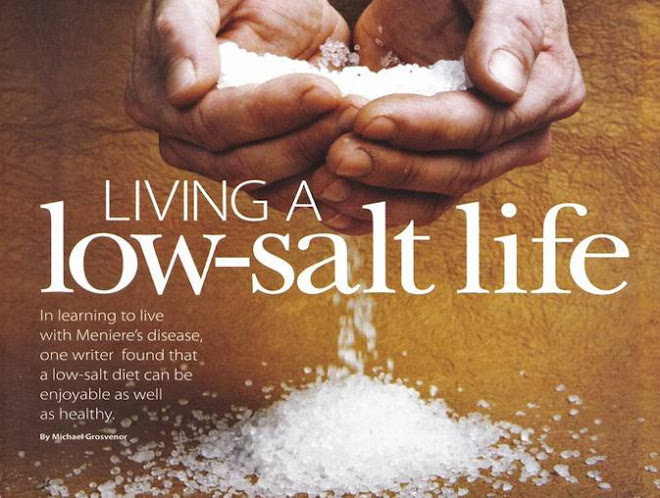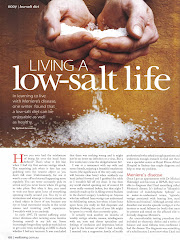Have you ever had the misfortune of being hit over the head from behind? That’s what it felt like when I had my first serious vertigo attack. The surprising jolt when it hits has you grabbing on to the nearest object so as you don’t fall over. Unfortunately, it wasn’t a one off and started happening more regularly. You can never accurately pick its arrival and you never know where it is going to take place. But after it hits, you need to sweat out hour upon hour of everything spinning madly around you. You try and sit motionless and attempt to focus intently on a fixed object in front of you because any eye or head movement results in the worst nausea and vomiting you’ll experience. I wouldn’t wish it upon anybody.
In early 1997, I’d started suffering some minor dizziness after noticing some tinnitus (buzzing sound) in my left ear. Some increasingly longer dizzy spells at work led me to get some tests, including an MRI to check whether I had any tumours. It was concluded that there was nothing wrong and it might just be an inner ear infection or a virus. But a few weeks later came the sledgehammer hit!
I was at a restaurant with my wife and some friends, enjoying a beautiful mushroom risotto (the significance of this very salty meal will become clear later) when all of a sudden my head jerked forward and I grabbed the table so as I wouldn’t fall off my chair. It was then my world started spinning out of control. I’d never really vomited before but that night I certainly made up for it, filling several buckets in the doctor’s surgery I ended up at. Anyone that has suffered from vertigo can understand its debilitating nature but when it lasts hour upon hour you really do feel desperate and helpless, thinking that the rest of your life might be spent in a world that constantly spins.
It actually took another six months of weekly vertigo attacks, nausea, misdiagnosis with ear, nose and throat specialists and feelings of confusion and depression before I got to the bottom of what I had. Luckily, I married into a supportive family of health professionals who asked enough questions and undertook enough research to find out that there was a specialist centre at Royal Prince Alfred Hospital in Sydney who might diagnose and help to treat what I might have.
Once I got an appointment with Dr Michael Halmalgyi and his team at RPA, they were able to diagnose that I had something called Meniere’s Disease. It is defined as “idiopathic syndrome of endolymphatic hydrops” or, in easier to understand terms, “episodic vertigo associated with hearing loss, aural fullness, and tinnitus”. Although several other disorders can involve episodic vertigo, it is the tinnitus or aural fullness (or both) that must be present and tested on the affected side to formally diagnose Meniere’s.
An uncomfortable testing procedure that included an electronic device and a series of balance and aural fullness tests confirmed I had the disease. The diagnosis was somewhat of a relief because I now knew what I had and what I could do about it. In fact, after they diagnosed me as having “classic” Meniere’s, I initially felt a weird sense of triumph of how special I must be to be diagnosed with “classic” Meniere’s.
This smugness soon left me when they told me that there was no known cause and no magical cure. “So, do I have to put up with these vicious vertigo attacks for the rest of my life” I asked? “It really does depend on how you move forward from here” was the response. “There are several stages to Meniere’s and you will have periods of vertigo attacks, associated nausea and constant tinnitus in the ear but if managed well their severity might be a lot less”. It was added that “although there are no guarantees, many Meniere’s sufferers have responded positively to a very-low salt diet with the help of diuretics now and then, and staying as fit and healthy as possible.
The team at RPA gave me some dietary information on what a low salt diet meant. and details of support group available to assist in providing more information on Meniere’s and how to best control it. “OK, a glimmer of hope that I can do something about this thing” I remember thinking at the time.
It is in my nature to find out more about things. In fact, as soon as I got home from RPA I had a burning desire to get as many answers as I could and to try and relate it to my own situation. I wanted to know who this Meniere guy was? Where exactly in the inner ear is this problem being caused? Why does salt, or the lack of it, help so much? What do other people do to manage their Meniere’s? What have been other people’s experience with vertigo? What if I get it in the other ear – what will I do then? I had so many questions and thankfully I had the Internet to enable me to scour the answers to my questions.
In simple terms, the “Meniere’s” ear is characterised by a build-up of one of the two inner ear fluids (the potassium-rich endolymphatic fluid) that causes it to leak into the other (the sodium-rich fluid). It is such a miniscule component of our finely tuned balance system that you need a microscope to find it. Unfortunately, no one knows what causes this build-up, although there are many theories that abound on potential causes.
Although I spent the rest of the week reading everything I could about the Disease – from hard to understand medical analysis through to people’s personal accounts, I don’t mind admitting that I was in tears a couple hours into my research. It was the personal accounts that got me. Many people had not been able to cope, had sought psychiatric help because of the constant ringing in their ears and even contemplated suicide rather than have wave after wave of vertigo attacks. But, after some very positive reinforcement from my partner, I was able to find what I wanted and to figure out what might work best for me in my situation.
I kept on reading and researching and realised some weeks later that most of the personal accounts were negative experiences people have had. Their accounts were cries for help to those who might understand their experience and offer some helpful advice. It turns out that many sufferers are motivated to write about their negative experiences but not their positive ones.
Twelve years after being initially diagnosed, there have been many bumps on the road, bouts of confusion and a few frustrating twists and turns. I still get the odd bout of vertigo – maybe once every six months – and when I do it usually lasts a couple of seconds and the nausea has almost disappeared when it does. And, as any partner of a Meniere’s sufferer will attest, you develop a very structured lifestyle to manage the disease, including always sleeping on the affected side of the head (many of my earlier vertigo attacks occurred in bed after turning quickly); adopting a very regimented diet and eating regime (I have frustrated many a chef!); and avoiding activities like swimming and some sports that might involve rapid head movement.
I can now safely say that I have managed my Meniere’s well, with the common denominator being the strict adherence to a low-salt diet. Yes, I have constant tinnitus and yes, when it is at its worst I can hardly hear out of the effected ear, but my ability to reduce the incidence and severity of vertigo attacks and nausea has enabled me to lead a relatively normal life. In fact, in a roundabout way, having Meniere’s has taught me much about my body, my health and my approach to life. This is why I want to tell people about my positive experience in managing this awful Disease and to proclaim the benefits of leading a low-salt diet life, not just because it helps with Meniere’s but because it can help with your overall health, especially in managing the risks associated with blood pressure and heart disease.
I do need to provide you with a disclaimer though. The research shows that not all Meniere’s treatments, which range from dietary and lifestyle changes to medications and surgery, works for everyone. Each Meniere’s sufferer needs to work with their specialist, monitor changes to figure out what might be a potential trigger for each Meniere’s related episode (this can lead to a lot of second guessing but diarising your daily food intake can help so as you can trace what you had in the lead up to an attack), and to try different treatments to find out what works best for them. It appears that most sufferers are able to manage their symptoms reasonably well by finding a regime that works best for them. For me, it is mainly the low-salt diet.




